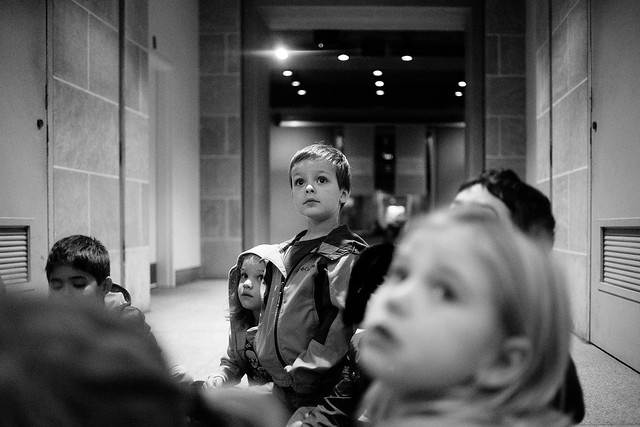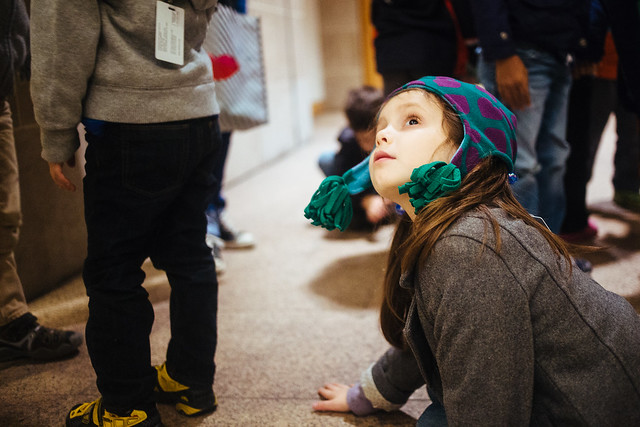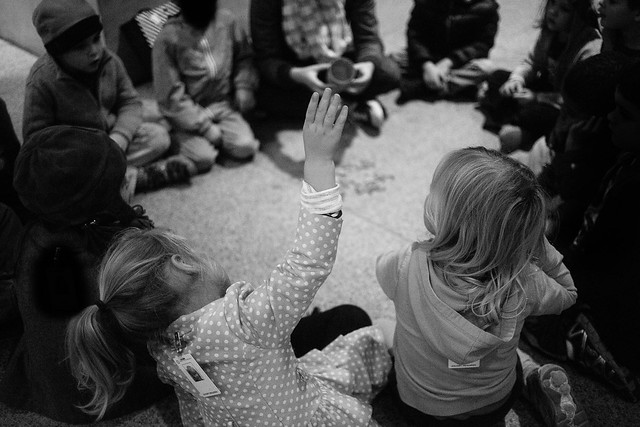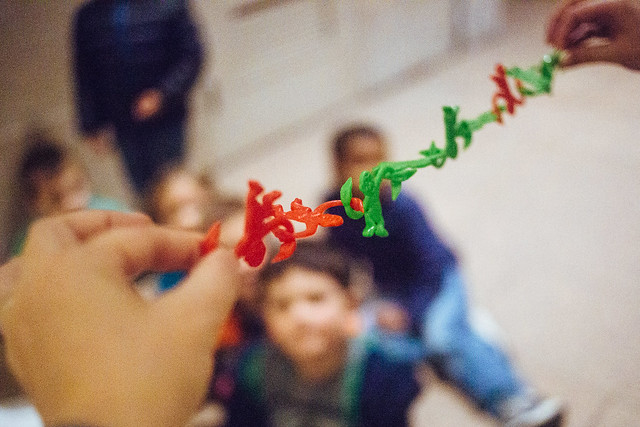
A few weeks ago I brought the kids to the Artisphere to see some of their new exhibits. As always, there was only one other group of visitors in the building. As F summarized the situation, "mom, this place is so awesome, I can't understand why nobody ever goes here." Nor can I F, nor can I.
First off, Elsabe Dixon, the artist in residence through 2015, who works with silk worms. An incredibly friendly Dixon let my kids carry a silkworm by its wings and (even better) bring home a cocoon. Plus, her work is a joy to take in, as the space feels like part studio and part habitat. Dixon mentioned that as part of her her current project she plans on building an even more interactive exhibit in the Artisphere, so keep checking in.
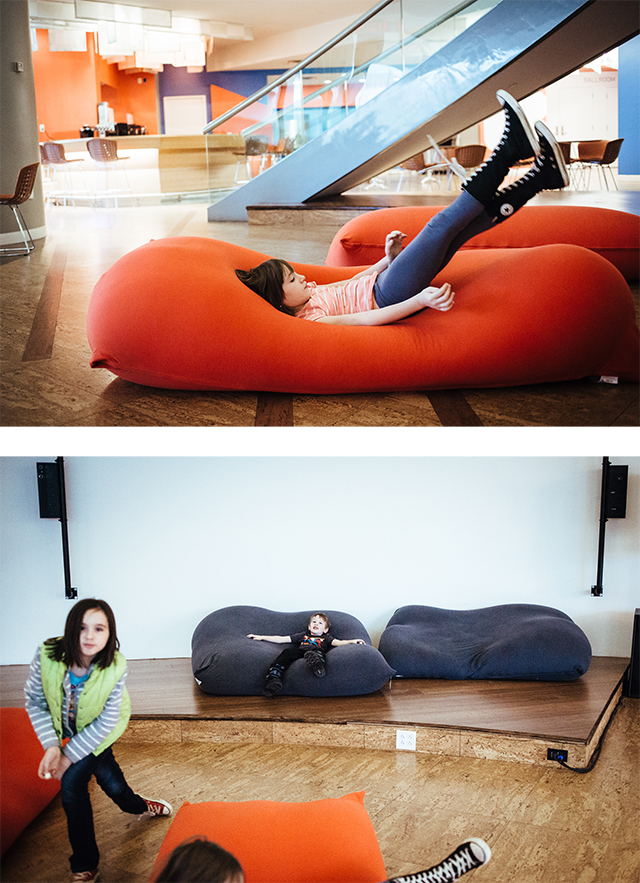
After visiting with Dixon, we started to make our way to the galleries upstairs, but as soon as the kids found the lounge's Yogibo chairs, we needed to break for "chill" time. Have you ever tried one of these? They mold to your body like a comfy sweater. Really, sort of amazing. Now everyone in our family wants their own.
While we relaxed, we checked out a slideshow of Yassine El Mansouri's observation photos. Each photograph features an ariel view of a person surrounded on the floor by all the clothing he/she owns, leading us to various discussions about how much floorspace we would each need to take a similar photo. [T, not very much; whereas P requires a football field for all of her clothing (not really, but almost)].
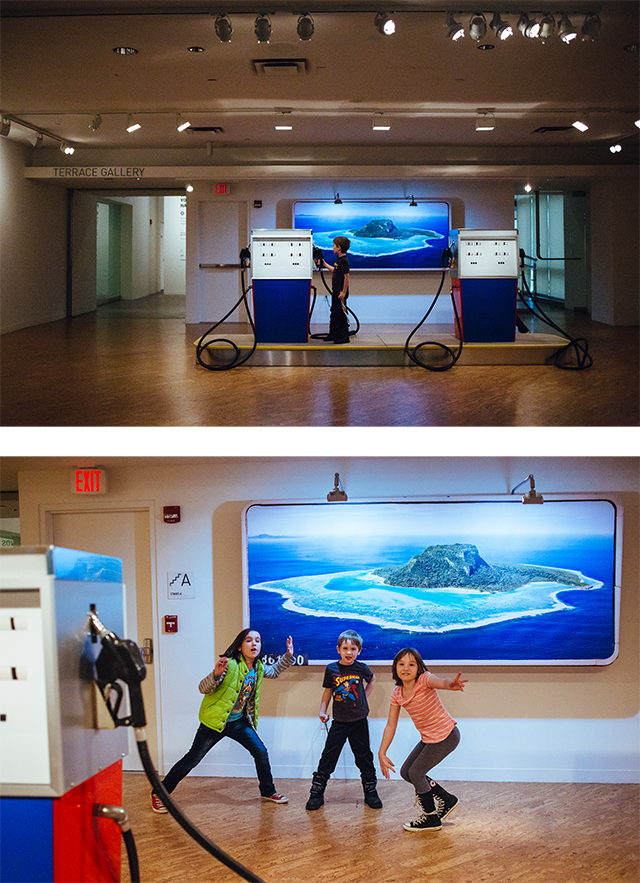
Eventually, we made it upstairs, where T quickly discovered Dustin Carlson's gas pump sculpture. I'm not sure Carlson meant his work to be interactive, so I told T not to touch the pump, but not before I snapped a quick (adorable) photo of the experience.

In the museum's main gallery, the Think With Your Hands exhibit showcases several shadow box collages by various artists. A small sun/circle symbol resides next to several of the works, for these you can either borrow an ipad from the Artisphere or download an app and the work will in some way become interactive.
While this sounds like a cool idea in theory, most of the artworks' ipad interactions just link up photos of the artist's sketchbook or other works, which I felt distracted somewhat from the actual works on display. But my kids love an ipad, so they found the experience "awesome".
Finally, we meandered to the movie studio, where Kadavre Exquis's "what is dead may never die" played on a continuous loop. The video seemed rather random, making it fun to watch with a group of kids under 10. Since none of us really "got" it, we all had different theories about what it was about (T remains convinced that the videoplayer broke, thus explaining why the images made no sense to him).
All in all we only spent about an hour at the Artisphere (it is a rather small museum/gallery). But it was a really good, fun hour.
The FREE Artisphere is only open:
Wednesday-Friday from 4:00 to 11:00 p.m
Saturday: Noon – 11:00 p.m.
Sunday: Noon – 5:00 p.m.
Parking is free with validation, making it an easy in and out destination. Plus, it is fun. And relatively kid-friendly. Perfect for Thanksgiving weekend. Click here for more information.
Also, if you're looking for kid-friendly museum ideas this winter, don't forget that Smithsonian's Early Education Center offers some wonderful classes for the 6 and under crowd, click here to learn more.
